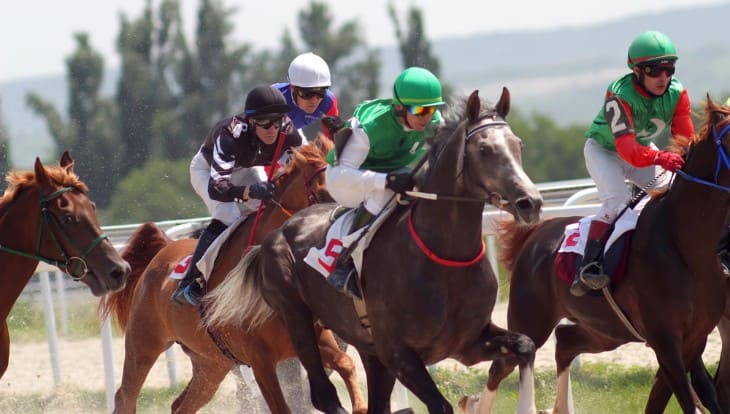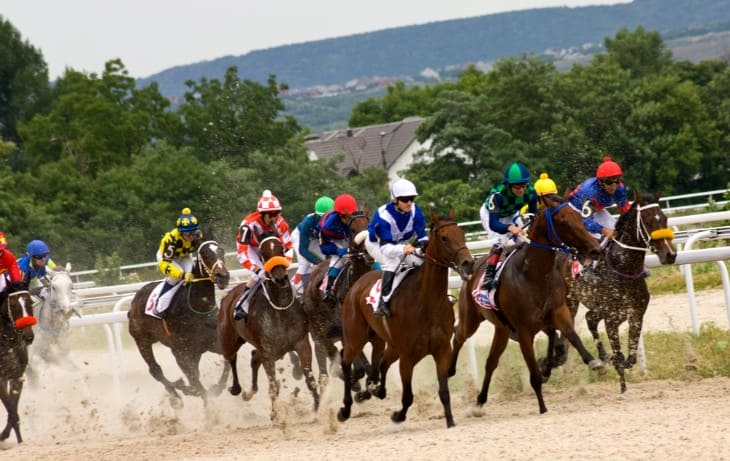Alongside its tradition, horse racing has accumulated its fair share of myths and misconceptions. In this comprehensive article, we will delve into and debunk 20 of the most pervasive myths that have clouded the understanding of the world of horse racing.
Myth 1: All Horse Races Are Rigged
Reality: While instances of cheating and race-fixing have been recorded in the annals of horse racing, it is imperative to dispel the sweeping notion that all races are rigged. The overwhelming majority of races are conducted under stringent regulations and meticulous oversight by racing authorities and governing bodies. These entities work tirelessly to ensure the integrity of the sport and a level playing field for all competing horses and their connections.
Myth 2: Horses Are Drugged to Enhance Performance
Reality: One of the most damaging myths surrounding horse racing is the misconception that horses are routinely drugged to enhance their performance on the track. In reality, the use of performance-enhancing substances is categorically prohibited within the realm of horse racing. Rigorous and comprehensive drug testing protocols are in place to detect and deter any attempts to compromise the fairness of competition. Strict penalties are imposed on those found in violation of these regulations.
Myth 3: Horses Are Whipped Unmercifully During Races
Reality: The image of jockeys ruthlessly whipping horses during races has led to the myth that cruelty is inherent to the sport. However, it is crucial to clarify that jockeys utilize whips primarily as a means of guidance and encouragement rather than cruelty. The rules governing whip usage have been meticulously refined to ensure the welfare of the horse, limiting the number of strikes and emphasizing the judicious application of this tool.
Myth 4: All Jockeys Are Adults
Reality: While the stereotypical image of a seasoned adult jockey is widely recognized, it is a myth that only adults partake in horse racing. The industry acknowledges the presence of young jockeys, referred to as apprentices, who undergo intensive training and education. These young riders adhere to the same rigorous rules and regulations as their adult counterparts, showcasing their dedication and commitment to the sport.
Myth 5: Horse Racing Is Inhumane and Abusive
Reality: One of the most damaging misconceptions surrounding horse racing is the notion that it perpetuates inhumane treatment and abuse of the animals involved. However, this myth obscures the industry's genuine commitment to equine welfare. Horses participating in races are subject to meticulous care, including regular veterinary oversight, appropriate nutrition, and comprehensive exercise routines. Racing authorities and stakeholders prioritize the well-being of the horses above all else.

Myth 6: Thoroughbreds Are Pushed Beyond Their Limits
Reality: The myth that thoroughbred racehorses are relentlessly pushed beyond their physical limits perpetuates a skewed understanding of training practices. In truth, thoroughbred horses are bred and trained with careful consideration for their physical capabilities and limitations. Trainers and handlers work diligently to strike a delicate balance between conditioning and preventing injury, thereby safeguarding the long-term health and well-being of these remarkable athletes.
Myth 7: Betting Is the Only Source of Revenue
Reality: While betting undeniably constitutes a significant portion of the revenue generated by horse racing, it is a misconception to assert that it is the sole financial pillar of the industry. Horse racing venues derive income from diverse sources, including sponsorships, race-day admissions, merchandise sales, and media rights. This multifaceted revenue model ensures the sustainability and growth of the sport.
Myth 8: All Racehorses End Up in Slaughterhouses
Reality: The distressing myth that all retired racehorses meet a tragic fate in slaughterhouses obscures the strides made by the horse racing industry to address post-retirement care. Numerous organizations and initiatives have been established to facilitate the rehoming, retraining, and responsible retirement of these equine athletes. The industry acknowledges its responsibility towards the well-being of its participants beyond their racing careers.
Myth 9: Horse Racing Is a Dying Sport
Reality: Contrary to the pessimistic assertion that horse racing is teetering on the brink of obsolescence, the sport continues to maintain its significance and relevance in various regions around the globe. While it is true that the industry has faced challenges, such as evolving entertainment preferences and regulatory issues, proactive efforts, including fan engagement initiatives, technological innovations, and enhanced regulatory frameworks, have been instrumental in ensuring the sport's enduring appeal.
Myth 10: Only the Fastest Horse Wins
Reality: The myth that victory in horse racing is solely determined by raw speed overlooks the intricate dynamics that influence race outcomes. While speed undeniably plays a crucial role, numerous variables, such as jockey skill, track conditions, race strategy, and the horse's tactical positioning, collectively contribute to determining the victor. Successful horse racing involves a multifaceted blend of athleticism, strategy, and collaboration between horse and rider.

Myth 11: Female Jockeys Are Inferior
Reality: The pervasive myth that female jockeys are inherently inferior to their male counterparts flies in the face of reality and the accomplishments of numerous female riders who have excelled in the sport. Gender is not a determinant of a jockey's proficiency or capability to compete at the highest levels of horse racing. Female jockeys have demonstrated exceptional skill, dedication, and determination, effectively debunking this baseless stereotype.
Myth 12: Racehorses Are Abandoned After Retirement
Reality: The misconception that racehorses are universally abandoned and neglected upon retirement undermines the commitment of the horse racing community to ensuring the well-being of its participants beyond their racing careers. Reputable trainers, owners, and industry stakeholders actively engage in retraining and rehoming initiatives, facilitating smooth transitions for retired racehorses into new roles, such as equestrian sports, therapy programs, or companion animals.
Myth 13: All Horse Races Are Held on Turf
Reality: The common misconception that all horse races take place on turf surfaces oversimplifies the diverse track options available to competitors. Horse races are conducted on a variety of track surfaces, including dirt, turf, and synthetic materials. Each surface possesses unique characteristics that influence race dynamics, such as speed, traction, and endurance requirements, adding depth and complexity to the sport.
Myth 14: Betting on Horses Is a Surefire Way to Get Rich
Reality: The fallacious belief that betting on horse racing is a guaranteed pathway to financial success disregards the inherent risks and uncertainties associated with gambling. While skilled bettors may enjoy occasional wins, betting outcomes are subject to a significant element of chance. Professional bettors invest substantial time and effort into studying form, analyzing odds, and understanding race dynamics to increase their chances of success.
Myth 15: Horses Love to Run and Compete
Reality: The myth that horses inherently love to run and compete on the racetrack oversimplifies the complex relationship between horses and racing. Horses are conditioned through training and habituation to engage in competitive racing. While some horses may exhibit enthusiasm for racing, others may display varying levels of engagement based on their individual temperament and experiences.
Myth 16: Horse Racing Is Only for the Wealthy
Reality: The perception that horse racing is exclusively accessible to the affluent overlooks the diverse ownership models that have democratized participation. While traditional sole ownership may require substantial financial resources, alternative ownership structures, such as syndicates and partnerships, have emerged to provide more affordable avenues for enthusiasts to become involved in the sport. These innovative models contribute to a more inclusive and diverse ownership landscape.
Myth 17: Horse Racing Is Easy Money for Owners
Reality: The notion that horse racing guarantees easy financial gains for owners disregards the significant financial investments and risks associated with horse ownership. Beyond initial purchase costs, owners incur ongoing expenses such as training fees, veterinary care, transportation, and other overheads. Success in horse racing is contingent upon a combination of factors, including horse quality, training effectiveness, and racing luck.
Myth 18: All Jockeys Use Performance-Enhancing Whips
Reality: The myth that all jockeys utilize performance-enhancing whips to secure victory misrepresents the modern regulatory landscape of horse racing. Contemporary racing rules restrict the use of whips for corrective purposes only, prohibiting their use as tools to enhance a horse's performance. These regulations prioritize equine welfare and fair competition, emphasizing responsible whip usage.
Myth 19: Horses Are Forced to Race Against Their Will
Reality: The misconception that horses are forced to compete against their will disregards the training and conditioning processes integral to preparing racehorses. Horses are trained to participate in races through systematic training routines and positive reinforcement. While not all horses may possess the same enthusiasm for racing, a collaborative partnership between horse and rider, coupled with appropriate training, forms the foundation of their engagement on the track.
Myth 20: Horse Racing Has No Concern for the Environment
Reality: The myth that horse racing is indifferent to environmental concerns overlooks the industry's proactive efforts to adopt sustainable practices. Many racing venues are actively implementing eco-friendly initiatives, encompassing waste reduction, energy conservation, water management, and sustainable facility design. These measures reflect the industry's commitment to minimizing its ecological footprint and fostering a more environmentally conscious approach to horse racing.
Conclusion
In conclusively debunking these pervasive myths surrounding horse racing, a more accurate and nuanced understanding of the sport emerges. While horse racing faces its share of challenges, controversies, and evolving perceptions, the industry remains steadfast in prioritizing equine welfare, competitive integrity, and fan engagement. By dispelling these myths, we contribute to a more informed and balanced discourse on horse racing's role in the world of sports and entertainment.








